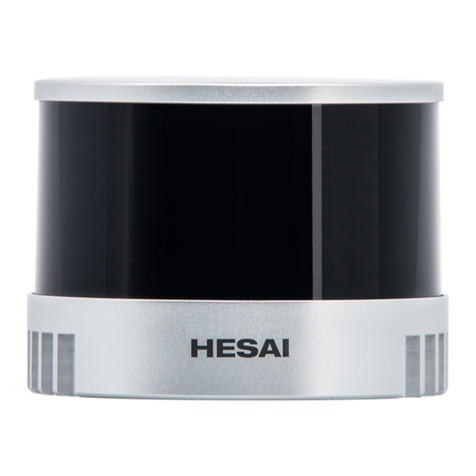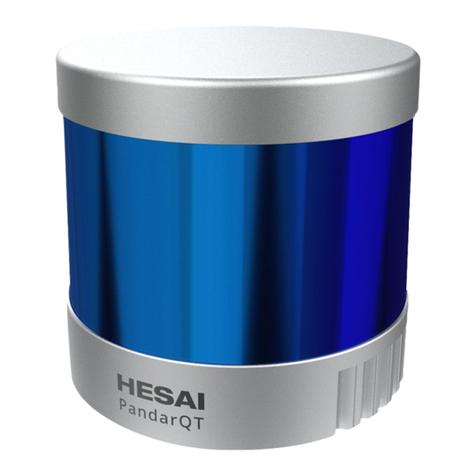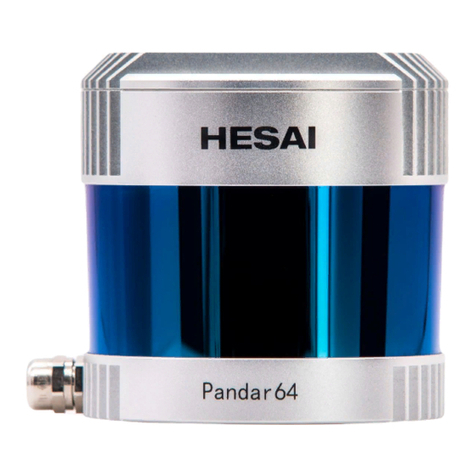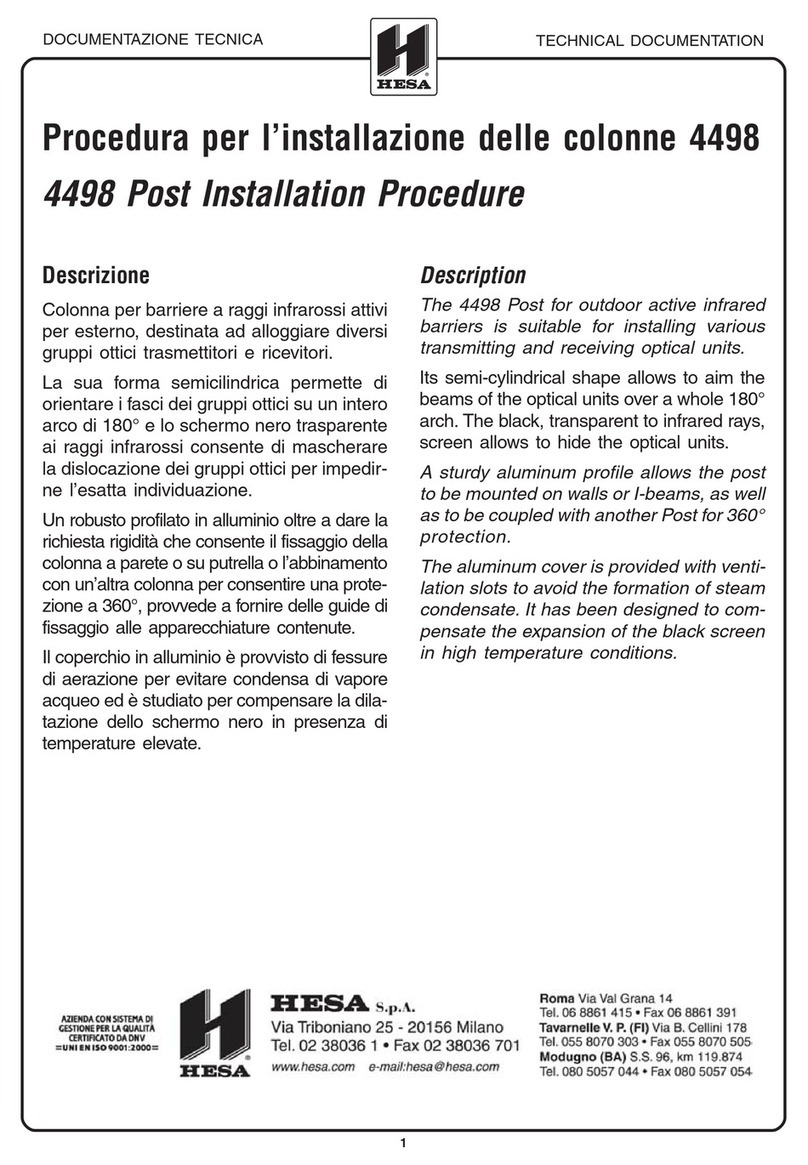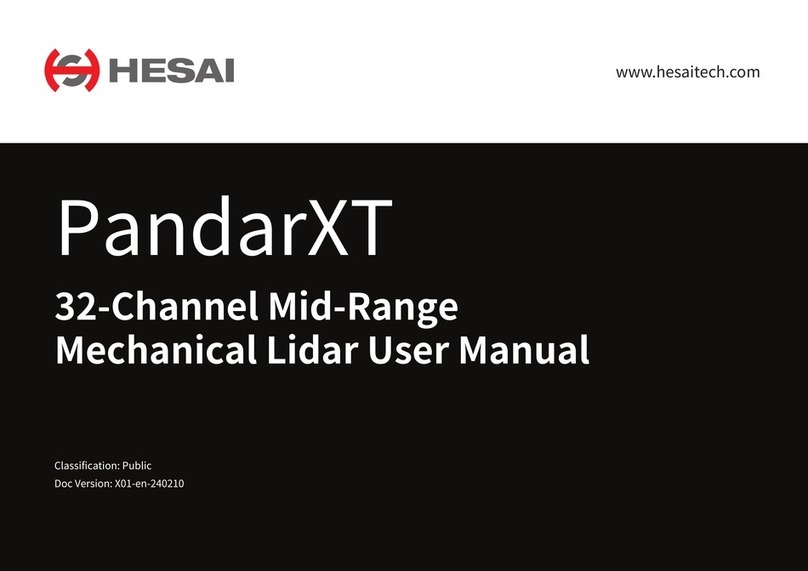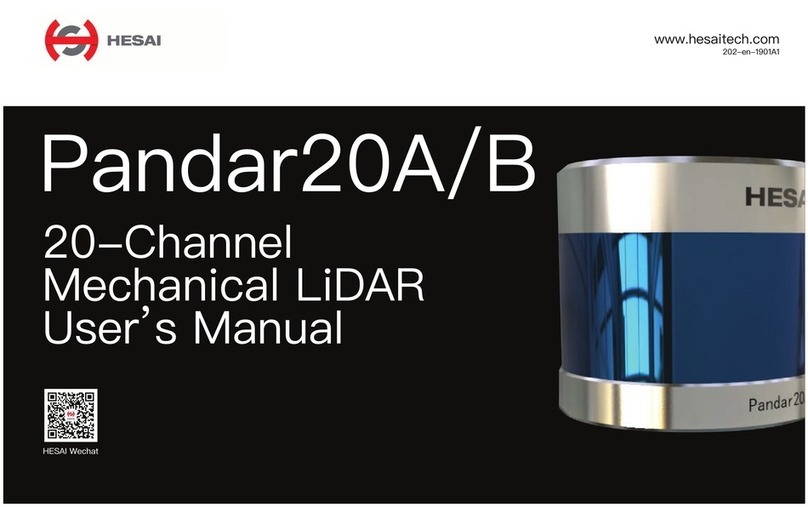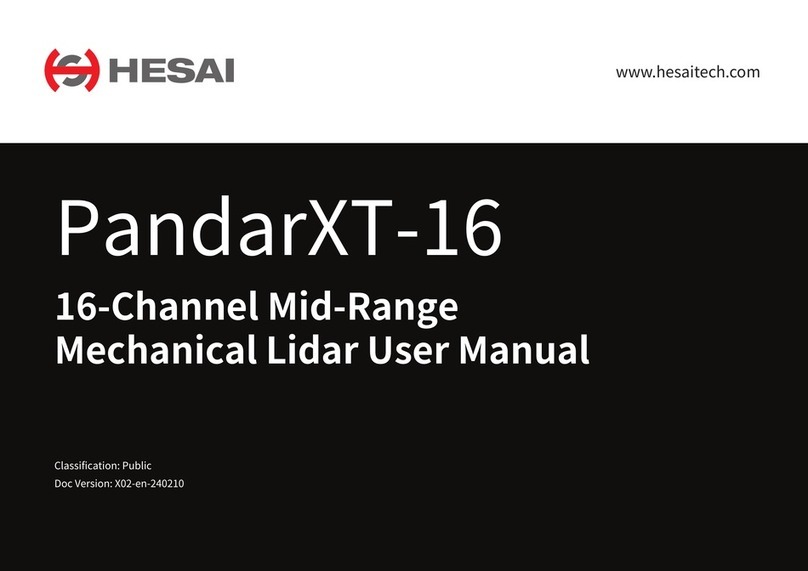
◼
Safety Precautions
In all circumstances, if you suspect that the device malfunctions or is damaged, stop using it immediately to avoid potential hazards and injuries. Contact an
authorized Hesai Technology service provider for more information on device disposal.
Handling
This device contains metal, glass, plastic, as well as sensitive electronic components. Improper handling such as dropping, burning, piercing, and squeezing
may cause damage to the device.
In case of dropping the device, STOP using the device immediately and contact Hesai technical support.
Enclosure
This device contains high-speed rotating parts. To avoid potential injuries, DO NOT operate the device if the enclosure is loose or damaged.
To ensure optimal performance, do not touch the device’s enclosure with bare hands. If the enclosure is already stained, please refer to the Sensor
Maintenance chapter in user manuals for the cleaning method.
Eye Safety
Although the device meets Class 1 eye safety standards, DO NOT look into the transmitting laser through a magnifying device (microscope, eye loupe,
magnifying glass, etc.).
For maximum self-protection, avoid looking directly at the device when it is in operation.
Repair
DO NOT open and repair the device without direct guidance from Hesai Technology. Disassembling the device may cause degraded performance, failure in
water resistance, or potential injuries to the operator.
Power Supply
Use only the cables and power adapters provided by Hesai Technology. Only the power adapters that meet the device’s power requirements and
applicable safety standards can be used. Using damaged cables, adapters or supplying power in a humid environment can result in fire, electric shock,
personal injuries, product damage, or property loss.
